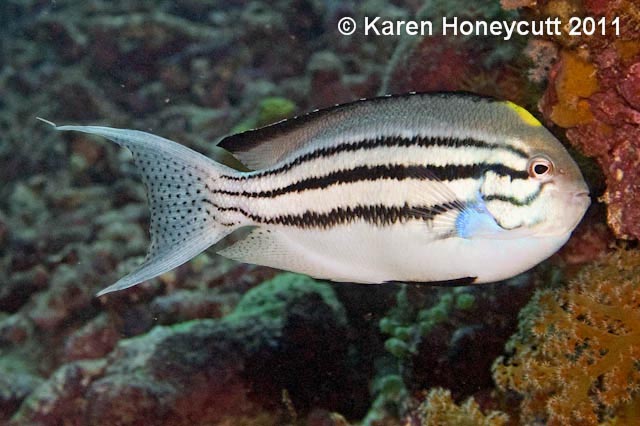| Pomacanthidae (Angelfishes) |
| 25 cm TL (male/unsexed) |
|
reef-associated; marine; depth range 10 - 50 m, non-migratory |
| Indo-West Pacific: Indo-Malayan region, eastward to Vanuatu, north to southern Japan, southward to the Great Barrier Reef. |
|
Dorsal spines (total): 15-15; Dorsal soft rays (total): 15-16; Anal spines: 3-3; Anal soft rays: 16-17. Description: Overall white with 3 black stripes on side; dorsal fin with broad submarginal black band; caudal fin with black dots, female with broad black band on the dorsal and ventral edges; pelvic fins white in female, black in male; a few irregular bands radiate from the eye in male (Ref. 2334). Body depth 1.9-2.2 in SL (Ref. 90102). |
| Inhabit shallow reef crests and deep reefs adjacent to steep slopes. Form aggregations to feed in midwater well above the bottom; harems of 3-7 individuals. Feeds on plankton. Frequently exported through the aquarium trade (Ref. 48391). |
|
Least Concern (LC); Date assessed: 08 October 2009 Ref. (130435)
|
| harmless |
|
Known from Romblon (Ref. 58652), Tañon Strait (Ref. 107276) and Sarangani Bay (Ref. 106380). Found in Cebu fish markets (Ref. 393). Reproductive behavior and social organization described by Moyer 1984 (Ref. 33455). Also Ref. 2334. |
Source and more info: www.fishbase.org. For personal, classroom, and other internal use only. Not for publication.

